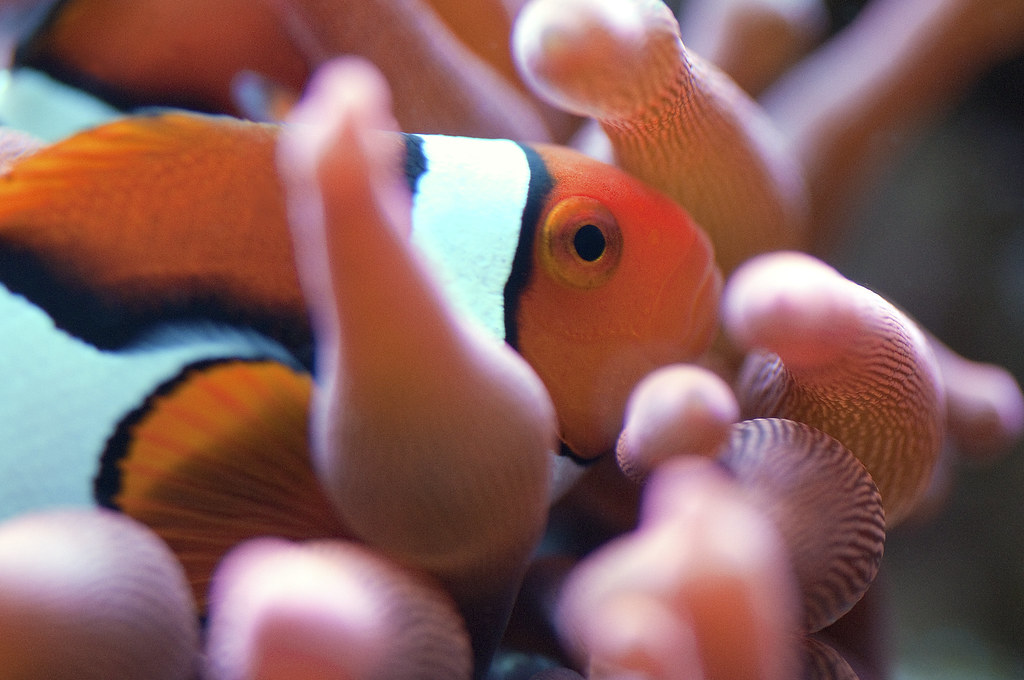Here’s a pic from my reef tank of a new fish addition I made yesterday. Just acquired these clownfish from another reef enthusiast who is retiring from the hobby. There are two, a mated pair (Christine and Rico). The female, pictured below, is larger that the male, and they are a breeding pair that should spawn about every two weeks. Some enthusiasts raise the fry and sell them. At this point in my tank, when they hatch, the fry will be feeding the other fish and corals. They are hosted by a red bubble-tip anenome.



You have the coolest hobbies! How big is the tank? Corals eat fish, I had no idea. Do Christine and Ricco come when you call their name? What do you mean when you say they are “hosted by” a red bubble-tip anenome? Sorry for the stupid questions but this is really fascinating.
Great shot Chris, enjoy your new reef member. Peter has a 90 gallon reef tank and one time his elegant coral ate a large goby during a tank change. Nature is beautiful and harsh at the same time. The coral ended up being eaten by a tang if I remember correctly. JH
Cool. My husband is into fish. His college house had 17 different tanks, most 55 gallon or bigger (I don’t want to imagine their electric bill). Now we just have one tank that currently has a piranha who is outgrowing the tank much faster than we planned so he needs a new home. We stick to freshwater b/c Phil likes cichlids.
Julie I think hosting means they live in that anemone, like a nest. Have you seen Finding Nemo? lol
@Julie
Jullie, Lies is right, the fish essentially live in the anenome like a nest. Those pinkish fleshy arms around the fish’s head in the pic are tentacles of the “host” anenome that offer some protection from predators to the fish in the wild. The tentacle can sting other fish, but the clownfish are immune to them. In return, the anenome gets some food from the fish. When they lay eggs, the fish will focally push the anenome away from the rock at it’s attatchment point to create a little pocket where the eggs are them deposited from the female’s mouth. The anenome then closes up around the eggs and they are safe within a cocoon-type thing. Also, no they don’t come when i call their name (never really tried that actually), but they do venture out of the anenome on occasion and when i feed them for sure.
Some of my corals are carnivores when their zooxanthelae algae aren’t providing food from photosynthesis (at night). They all have tentacles, most of which are much smallter than those of the anenome. These tentacles can grab anything small enough (including fish fry which are considered part of zooplankton) and sting it and draw it into the polyp’s mouth. The reef looks peaceful at first glance, but is actually a very hostile environment where everything is trying to eat everything else, or kill it’s neighbor for precious real estate so it can grow and reproduce.
Super cool Chris, another interesting sub-culture.
Not sure which Julie you guys were referring to but Peter reminded me it was a blenny (?sp) that our elegant coral ate. Yes, we have had clowns/anenomes, I love them but Peter says no more since his tank is live rock and corals at this time. Nemo will eat the corals. I love the symbiotic relationships! JH 🙂